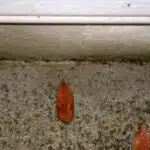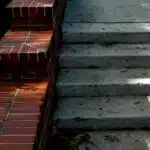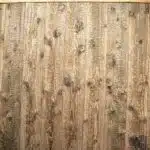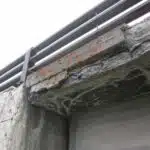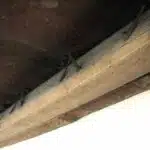As a glass repair expert, I am often asked about the best ways to repair cracked glass. Whether it is a windowpane or a decorative item, cracks can be unsightly and compromise the structural integrity of the piece. While some may consider replacing the entire item, repairing the crack can be a more cost-effective solution. In this article, I will share my knowledge on how to repair cracked glass in a way that is both safe and effective.
Firstly, it is important to understand that not all cracks are created equal. The type, location and severity of the crack can determine whether or not it can be repaired. It is crucial to assess these factors before attempting any repairs. Additionally, proper safety precautions must be taken when handling broken glass as it poses a risk of injury. By following the guidelines and techniques outlined in this article, you can confidently repair your cracked glass items and extend their lifespan while saving money on replacements.
Understanding Different Types Of Glass Cracks
Types of Glass Cracks: What Causes Them and How to Prevent Them
Glass cracks are a common problem that can occur due to various reasons. The most common causes of glass cracks include physical damage, temperature changes, and manufacturing defects. Physical damage occurs due to impact from external objects, while temperature changes cause the glass to expand or contract. Manufacturing defects can also lead to cracks in glass.
To prevent glass cracks, it is important to handle the glass with care during transportation and installation. Proper support should be provided during these processes to prevent stress on the glass. Additionally, avoid exposing the glass to extreme temperatures or sudden changes in temperature. It is also recommended to have regular inspections of the glass for any signs of wear and tear.
Identifying the type of crack on your glass is crucial in determining the appropriate repair method. There are different types of cracks that can occur on glass, such as surface-level cracks, edge cracks, and through-cracks. Surface-level cracks only affect the top layer of the glass and can often be repaired easily. On the other hand, edge cracks occur near the edges of the glass and require more attention as they can spread quickly. Through-cracks are those that penetrate through both sides of the glass and require immediate attention as they may compromise structural integrity.
Assessing The Severity Of The Crack
Assessing crack severity is an essential step in determining whether a glass repair job can be done or not. It is necessary to do this because not all cracks are fixable, and some may even pose a danger if left unaddressed. The importance of assessing crack severity cannot be overstated, as it will help determine the best course of action for the repair.
One way to assess crack severity is by examining its length and location. Long cracks that stretch from one end to another are usually more challenging to fix and may require replacement rather than repairs. Cracks that are located near the edges or corners of the glass also tend to compromise its structural integrity, making them harder to fix. Another method used in assessing crack severity is by measuring its width. A crack with a width that’s less than 1/8 inch can typically be repaired, while anything beyond that might require replacement.
Common mistakes in assessing crack severity include ignoring small cracks or underestimating their impact on the glass’s overall integrity. Some people also assume that all cracks can be fixed, leading them to attempt DIY repairs that could do more harm than good. Avoid these mistakes by seeking professional help from a glass repair expert who can accurately assess your glass damage and recommend the best solution.
Assessing crack severity should always be done before attempting any repairs or replacements. By doing so, you’ll have a better understanding of what needs to be done and how much it will cost. Once you’ve assessed the severity of your cracked glass, you can move on to identifying its location – another crucial step in repairing damaged glassware.
Identifying The Location Of The Crack
Identifying the exact location of the crack is essential to any successful glass repair. A thorough visual inspection should be conducted to diagnose the type and size of the crack, as well as any secondary damage that may be present. To find the exact position of a crack, a technician can use a magnifying glass and a bright light to trace the path of the crack. Finally, a technician may need to use specialized tools such as a glass pressure tester to accurately determine the location and size of the crack.
Diagnosing Crack
When it comes to repairing cracked glass, one of the first things that needs to be done is identifying the location of the crack. This can be a crucial step in diagnosing the extent of the damage and determining what steps need to be taken to repair it. There are several methods for identifying the location of a crack, each with its own strengths and weaknesses.
One common method for identifying cracks is to visually inspect the glass. This can be done by looking for visible signs of damage, such as chips or cracks. However, this method may not always be effective, as some cracks may be difficult to see without close inspection. In addition, even if a crack is visible, it may not always provide enough information about its location or severity.
Another method for identifying cracks is to use specialized equipment such as ultrasonic testing devices. These devices use high-frequency sound waves to detect cracks and other defects in glass surfaces. While this method can be highly effective at pinpointing the exact location of a crack, it may require specialized training or equipment that isn’t readily available.
Ultimately, diagnosing cracks requires careful attention to detail and a willingness to explore multiple options for identification. By understanding the causes and prevention methods associated with cracked glass, individuals can take proactive steps towards maintaining their windows or other glass surfaces in pristine condition.
Finding Crack Position
Identifying the location of a crack is crucial in repairing cracked glass. It is essential to know the position of the crack to determine its severity and what repair method to use. Finding the crack position requires tools and techniques that can accurately locate the damage.
One common tool used to find the crack’s position is a magnifying glass or a flashlight. This method requires careful observation by visually inspecting the glass surface for visible cracks or chips. However, this technique may not always be effective, especially if the damage is small or located in hard-to-reach areas. Professional inspection plays an important role in identifying hidden cracks that are not visible to the naked eye.
Another technique that professionals use to locate cracks is using ultraviolet light or black light. This method involves illuminating the damaged area with UV light, which causes any existing cracks or chips to fluoresce or glow brightly making them more visible. Professionals also use specialized equipment such as thermal cameras and laser measuring devices that can detect minute variations in temperature and vibrations caused by cracks.
In conclusion, finding crack position is vital in repairing cracked glass effectively. It requires proper tools and techniques to identify even hidden damages on any type of glass surface accurately. Professional inspection should be sought when dealing with severe damages that require immediate attention as it ensures safety and long-lasting repairs.
Gathering Necessary Tools And Materials
To repair a cracked glass, it is essential to have the necessary tools and materials. Where to buy these materials is a common question that arises during this process. The good news is that there are many cost-effective options available in the market. Local hardware stores, online retailers or home improvement centers are some of the places where you can purchase these materials.
In terms of cost-effective materials for repairing cracked glass, you will need a clear epoxy or UV-curing resin, a syringe or dropper to apply the adhesive, masking tape to secure the area around the crack, and a razor blade or scraper for removing excess adhesive. You may also need sandpaper with different grits for smoothing out any rough edges on the repaired area.
Tips for organizing your workspace when repairing cracked glass include clearing out any unnecessary items from your workspace and placing all your tools and materials within easy reach. It’s important to have sufficient lighting in your workspace so that you can see what you’re doing clearly. Also, make sure you have appropriate protective gear like gloves and safety glasses to avoid any accidents.
Transition into preparing the work area: Now that you have gathered all of your necessary tools and materials let’s move on to preparing the work area where we can start fixing our cracked glass problem.
Preparing The Work Area
Imagine you have just cracked the glass on a treasured family heirloom. The first step in repairing it is to prepare the work area. This means clearing any debris or clutter from the space around the object and covering any surrounding areas with protective materials to prevent further damage or mess.
Clearing debris may seem like an obvious step, but it is important to ensure that there are no small pieces of glass or other materials that could interfere with the repair process. Use a soft brush or cloth to gently sweep away any loose particles, being careful not to scratch or damage the surface of the object.
Covering surrounding areas is also crucial in order to protect your workspace and prevent any accidental spills or splatters from causing additional harm. Use newspaper, towels, or plastic sheeting to cover any nearby surfaces that could be affected by the repair process. By taking these simple steps, you can create a safe and clean environment in which to begin repairing your cracked glass object.
As we move forward with this repair process, it’s important to take safety precautions when handling broken glass. In order to avoid injury, always wear gloves and protective eyewear when working with sharp objects. Additionally, be sure to handle all tools and materials carefully and follow proper disposal procedures for any broken pieces or fragments. With these measures in place, we can move forward confidently towards restoring your cherished item back to its original condition.
Taking Safety Precautions
After preparing the work area, it is important to take safety precautions before repairing cracked glass. The first precaution that should be taken is wearing eye protection. This is a crucial step in ensuring that glass fragments do not enter the eyes during the repair process. Eye injuries can be serious and even lead to permanent vision loss, so it is essential to wear protective eyewear throughout the entire repair process.
Another important safety measure when repairing cracked glass is using proper ventilation techniques. Glass repair involves working with adhesives, which can release harmful fumes into the air. Adequate ventilation will help to prevent inhalation of these toxic fumes, reducing the risk of respiratory problems. It is recommended to work in a well-ventilated area or use a respirator if adequate ventilation cannot be achieved.
In summary, taking safety precautions when repairing cracked glass is critical for avoiding injuries and health hazards. Wearing eye protection and using proper ventilation techniques are essential steps in ensuring safe repairs. By following these guidelines, individuals can protect themselves from potential harm while effectively fixing cracked glass. In the next section, we will discuss how to remove any loose glass fragments before starting the repair process.
Removing Loose Glass Fragments
Before attempting to repair a cracked glass, you need to remove all the loose glass fragments. Removing loose glass is crucial in preventing further damage or injury during the repair process. As such, it is essential to exercise caution and follow safety guidelines when removing loose glass.
Safety Tips:
- Wear protective gear such as gloves and goggles.
- Use a vacuum cleaner with a brush attachment to remove any broken pieces of glass.
- Avoid using your bare hands as the sharp edges of broken glass can cause injuries.
- Dispose of the broken pieces properly in a sturdy container.
Tools Needed:
- Vacuum cleaner with brush attachment
- Gloves
- Goggles
- Sturdy container for disposal
It is important to note that removing loose glass fragments can be dangerous if not done correctly. Therefore, if you are unsure about how to go about this task or if you have a large area of damaged glass, it is recommended that you seek assistance from a professional.
Next, we will discuss the process of applying glass adhesive to repair the cracked glass.
Applying Glass Adhesive
After removing the loose glass fragments, it’s time to move on to the next step of repairing cracked glass. Before we proceed with the repair process, let’s take a closer look at some interesting statistics about broken glass. Did you know that according to a report by the Environmental Protection Agency (EPA), Americans throw away around 28 billion glass bottles and jars every year? That’s a staggering amount of waste! Fortunately, we can prevent adding to this waste by repairing our cracked glass instead of replacing it.
Now, let’s talk about applying glass adhesive. There are various types of adhesives available in the market that can be used to fix broken or cracked glass. However, not all adhesives are created equal. Some are stronger than others and may require professional assistance for application. Glass adhesive alternatives like clear epoxy or silicone glue can be cost-effective repair options but may not provide long-lasting results.
To decide which adhesive is best suited for your specific needs, refer to the following table:
| Adhesive Type | Strength | Drying Time | Waterproof |
|---|---|---|---|
| Super Glue | Strong | Quick | No |
| Epoxy | Very Strong | Slow | Yes |
| Silicone Glue | Moderate | Moderate | Yes |
When applying adhesive, make sure you follow the manufacturer’s instructions carefully and use protective gloves if necessary. Once applied, allow sufficient time for the adhesive to dry completely before handling or using your repaired item again.
After successfully applying the adhesive, it’s time to move on to filling the crack. This step involves using a filler material such as resin or putty to fill any remaining gaps in the broken or cracked area. But more on that in the next section!
Filling The Crack
One of the most crucial steps in repairing cracked glass is filling the crack. This step helps to prevent further damage and enhances the visual appeal of the repaired surface. When considering how to fill a crack, it is important to choose the right adhesive carefully. There are various adhesives available in the market, but not all are suitable for every type of glass.
The first technique for filling cracks involves using epoxy. Epoxy is a two-part adhesive that comes in a syringe with separate tubes for resin and hardener. Before starting, mix both parts thoroughly and apply it on the crack using a toothpick or brush. Allow it to dry before removing any excess adhesive by scraping it off gently with a razor blade or sandpaper. Another alternative is UV-curing resin, which hardens when exposed to UV light.
Choosing the right adhesive is crucial when filling cracks on glass surfaces. Whether you opt for epoxy or UV-curing resin, ensure that you follow instructions carefully and handle them with caution. Each adhesive has its own set of properties that make them suitable for different types of glass repair jobs. In our next section, we will discuss techniques for smoothing out the surface after filling cracks on your glass surface.
Smoothing Out The Surface
After filling the crack with resin and allowing it to dry, the next step is to smooth out the surface. It is crucial to make sure that the glass surface is completely flat before proceeding with polishing techniques. One way to do this is by using a razor blade or a sharp knife to gently scrape off any excess resin. Be careful not to scratch the surrounding area of the glass.
After scraping off any excess resin, sanding can be done to smoothen out any remaining bumps or roughness on the surface. Start with a coarse-grit sandpaper and work your way up gradually to finer grits until you achieve a smooth finish. Remember to use water while sanding as it helps in preventing scratching and clogging of the sandpaper.
Finishing touches involve polishing the glass surface for a shiny look. Polishing compounds such as cerium oxide or jeweler’s rouge can be used along with a soft cloth or felt pad. Apply a small amount of compound on the cloth or pad and rub it onto the glass in circular motions until you achieve your desired shine. Be patient and take your time during this process as it may require multiple rounds of polishing for best results.
To ensure that your repair job lasts long, curing and drying time is essential before using or cleaning your newly repaired glass object.
Curing And Drying Time
After smoothing out the surface of the cracked glass, it is important to allow sufficient time for the adhesive to cure and dry. This step is crucial in ensuring that the repair job is not only aesthetically pleasing but also long-lasting. It is like waiting for a cake to bake in an oven; you do not want to take it out too soon or too late.
When curing and drying the glass, ventilation plays a vital role in ensuring that the process is carried out effectively. The fumes from adhesives can be harmful if inhaled for prolonged periods, and as such, it is essential to work in a well-ventilated area. If working indoors, ensure windows are open and fans are on to circulate air. In cases where outdoor workspaces are used, ensure that there is no wind present that may interfere with the drying process.
For faster drying times, a hairdryer can be used after applying adhesive. A hairdryer helps to increase the temperature of the adhesive and speeds up its curing time. However, caution should be taken while using this method as prolonged heat exposure may cause damage to some types of glass. Once cured and dried completely, sanding and buffing can now begin to complete the repair job successfully.
Sanding And Buffing The Surface
Sanding and buffing the surface is a crucial step when repairing cracked glass. Before starting this process, you need to choose the right sandpaper for your specific needs. The grit of sandpaper that you use will depend on how deep the cracks are and how smooth you want the final result to be.
Choosing sandpaper can be confusing if you don’t know what to look for. Generally, a lower grit number means that the sandpaper is rougher and used for heavy-duty work. Higher grit numbers mean that the sandpaper is smoother and used for finishing work. For repairing cracked glass, it’s recommended to start with a coarse grit such as 120 or 180 and gradually move up to a finer grit such as 400 or 600 for a smooth finish.
Once you have chosen your sandpaper, it’s time to start buffing the surface. Buffing techniques vary depending on the type of crack and severity of damage. However, in general, it’s recommended to use circular motions with light pressure when buffing the surface. This will help remove any rough spots or sharp edges left by the sandpaper and create a smooth finish.
In the next section, we will discuss applying a protective coating to ensure that your repaired glass remains strong and durable. By following these steps for sanding and buffing your cracked glass, you’ll be able to restore it back to its original state without having to replace it entirely.
Applying A Protective Coating
Protective coatings are an essential part of glass repair and maintenance. A protective coating can help prevent future damage to the glass and extend its lifespan. There are different types of protective coatings available in the market, each with its own benefits.
One type of protective coating is a hydrophobic coating, which repels water from the surface of the glass. This type of coating is beneficial for windows or glass surfaces that are exposed to rain or other water sources. A hydrophobic coating can also make cleaning easier as it prevents dirt and grime from sticking to the glass.
Another type of protective coating is a UV-resistant coating, which protects against harmful UV rays from the sun. This type of coating is particularly useful for outdoor glass surfaces such as car windshields or patio doors. UV-resistant coatings can also prevent fading and discoloration caused by prolonged exposure to sunlight.
In summary, applying a protective coating to cracked glass has many benefits including preventing further damage and extending its lifespan. There are various types of protective coatings available in the market such as hydrophobic and UV-resistant coatings, each with their own unique advantages. By choosing the right protective coating, you can ensure your repaired glass remains in good condition for longer. The next step is inspecting your repaired glass to ensure it’s safe for use.
Inspecting The Repaired Glass
After applying a protective coating to the repaired glass, it is important to inspect the quality of the repair. Inspecting techniques involve checking for any visible cracks or bubbles in the coating. The surface should be smooth and uniform without any unevenness or bumps.
Quality control measures should also be taken to ensure that the repair will last for a long time. This includes checking the strength and durability of the coating, as well as testing its resistance to scratches and impacts. It is important to use high-quality materials and follow proper procedures when repairing cracked glass to ensure its longevity.
Overall, inspecting techniques and quality control measures are crucial steps in repairing cracked glass. By taking these steps, you can ensure that your repair meets high standards and will last for years to come. In the next section, we will discuss tips for preventing future cracks in your glass.
Tips For Preventing Future Cracks
Like a stitch in time saves nine, taking preventive measures to avoid glass cracks can save you from the inconvenience of future repairs. Glass is fragile and prone to cracking, but there are several ways to prevent it from happening.
Common causes of glass cracks include temperature changes, physical force, and improper installation. To prevent temperature-related cracks, ensure that your glassware is suitable for hot or cold liquids before using it. Avoid exposing your glassware to sudden temperature changes by placing them on room-temperature surfaces before adding hot or cold liquids. Also, handle your glassware with care and avoid stacking them as this can cause stress cracks.
Properly installing your glassware can also help prevent future cracks. Ensure that the surface where you place your glass has no debris that may cause scratches or chips on the bottom of the glass. Additionally, avoid using abrasive cleaners or sponges when cleaning your glasses as these can cause scratches that weaken the structural integrity of the glass. Following these simple preventive measures will go a long way in reducing the chances of experiencing cracked glasses in your home or business.
| Preventive Measures | Common Causes |
|---|---|
| Use suitable glassware for hot/cold liquids | Temperature changes |
| Handle with care; avoid stacking | Physical force |
| Clean with non-abrasive materials | Improper installation |
By adopting these preventive measures and avoiding common causes of glass cracks such as physical force, improper installation, and temperature changes, you can significantly reduce the likelihood of having to repair cracked glasses frequently. Be proactive in protecting your glasses by investing in appropriate storage solutions such as cabinets with protective padding for storing delicate stemware. With these simple steps in mind, you can enjoy using your favorite glasses without worrying about frequent damages caused by careless handling or other factors that contribute to cracked glassware.
Conclusion
Glass cracks can be a frustrating and potentially dangerous problem. As a glass repair expert, it is important to understand the different types of cracks and how to assess their severity in order to effectively repair them. Identifying the location of the crack is also crucial, as it can impact the methods used for repair.
To begin repairing cracked glass, gather all necessary tools and materials and prepare the work area. Sanding and buffing the surface can help smooth out any rough edges or imperfections before applying a protective coating. It is important to inspect the repaired glass thoroughly and take steps to prevent future cracks from occurring.
According to a study by AAA, windshield repairs can save drivers an average of $300 compared to full replacements. This statistic highlights the importance of prompt and effective glass repair, not only for safety reasons but also for financial savings. As a glass repair expert, it is our duty to provide quality repairs that not only fix the immediate issue at hand but also prevent future problems from arising. By following proper techniques and taking preventative measures, we can ensure that our customers’ glass remains intact and functional for years to come.
Image Credits
- “Apple iPhone 3GS cracked screen glass” by liewcf (featured)





